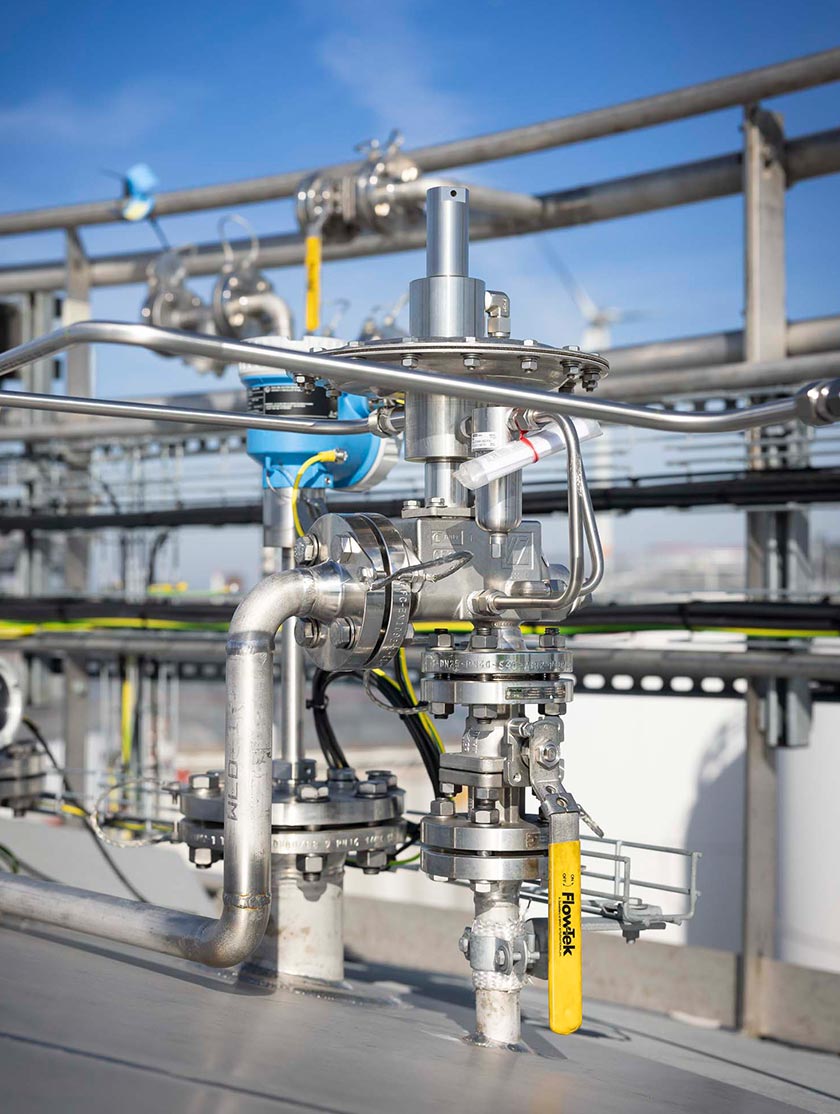How Pressure Reducing Regulators Work with Safety Devices in Fluid Systems
What is a Pressure Reducing Regulator?
A pressure reducing regulator (also referred to as pressure regulator) is a mechanical device designed to reduce and stabilize the pressure of a fluid, whether gas or liquid, from a higher inlet pressure to a specified lower outlet pressure. It automatically adjusts flow resistance to maintain constant outlet pressure regardless of fluctuations in inlet pressure or flow demand.
The Role of Pressure Regulators in Liquid Systems
Pressure reducing regulators primarily ensure that liquid is supplied to downstream equipment and pipelines at a safe and stable pressure suitable for their operation. By preventing excess pressure, they protect sensitive components from damage and reduce the risk of leaks or ruptures.
Key Safety Devices in Fluid Systems
- Relief Valves: Protect the system by relieving excess pressure if it exceeds a set limit.
- Isolation Valves: Allow sections of the system to be manually or automatically isolated for maintenance or emergencies.
- Pressure Switches: Monitor pressure levels to activate alarms or control signals if pressure deviates from set parameters.
- Rupture Discs: Provide a fail-safe rupture point to relieve pressure in the event of failure of other devices.
- Check Valves: Prevent backflow that can cause pressure abnormalities or contamination.
Interaction Between Pressure Reducing Regulators and Other Safety Devices
1. Coordination with Relief Valves
Pressure reducing regulators reduce pressure to a safe level, but if downstream pressure increases unexpectedly due to regulator failure, blockage, or thermal expansion, relief valves act as secondary protection by relieving excess fluid. Proper setting of relief valves should take into account the regulated pressure to prevent premature or unnecessary relief.
2. Integration with Shut-off Valves
Shut-off valves installed upstream or downstream of a pressure reducing regulator provide isolation for maintenance or emergency shutdown. In some systems, automatic shut-off valves can respond to abnormal pressure readings from a pressure switch, effectively protecting the regulator and downstream components.
3. Feedback from Pressure Switches
Pressure switches monitor the regulated outlet pressure from the pressure reducing regulator. If the pressure deviates from the required range, relays can activate alarms or shutdown protocols. This monitoring ensures that regulator faults or sudden pressure changes are quickly detected and corrected.
4. Rupture Disc Protection
Rupture discs provide the optimum safety mechanism. In a scenario where the pressure reducing regulator and relief valves fail to control the pressure, the rupture disc will rupture at the set pressure, protecting critical system components from catastrophic failure.
5. Backflow Prevention with Check Valves
Check valves ensure that the pressure reducing regulator receives fluid at the correct inlet pressure without backflow. Backflow can damage the regulator or cause dangerous pressure conditions. Ensuring proper flow direction maintains regulator integrity and system safety.
Best Practices for Matching These Devices
- Proper Sizing and Selection: Each device must be matched to system pressure, flow rate, and fluid characteristics to operate harmoniously.
- Proper Set Point Configuration: Pressure relief valves and pressure switches must be calibrated to match the pressure reducing regulator output to avoid unwanted tripping.
- Routine Maintenance and Testing: Periodic inspection ensures proper operation of all devices, especially regulators that may be subject to wear or contamination.
- System Design Considerations: Placement of devices in the fluid circuit should optimize their protective function and minimize pressure fluctuations.
Conclusion
Pressure reducing regulators serve as first-line control devices in fluid systems to maintain desired pressure levels. Their interaction with relief valves, shut-off valves, pressure switches, rupture discs, and check valves creates a multi-layered protection that increases system safety and reliability. Properly coordinated placement and maintenance of these components ensures that fluid management systems function properly, protecting both equipment and personnel from the risks associated with pressure anomalies.
Need the Right Pressure Reducing Regulator? Get Expert Help Selecting the Ideal Regulator Engineered for Performance |
Cashco’s pressure reducing regulators are designed for precise pressure control across a wide range of industrial applications—delivering reliability, safety, and efficiency. For more information about Cashco's regulators, view all models here .
Cashco's priority is to make sure you select the right product for your application. Need help sizing your regulator? Complete our Regulator Sizing Form and our experienced team will gladly assist you in finding the ideal product!
Animated Guide: Pressure Reducing Regulator Function |
Discover the workings of a pressure reducing regulator in our animation video. Using the force-balance principle, this device reduces and maintains downstream pressure in a pipeline. Watch as we demonstrate how the regulator’s diaphragm and valve assembly create resistance to reduce upstream pressure. Learn how downstream flow demands impact the regulator, causing it to adjust and maintain a constant pressure.





